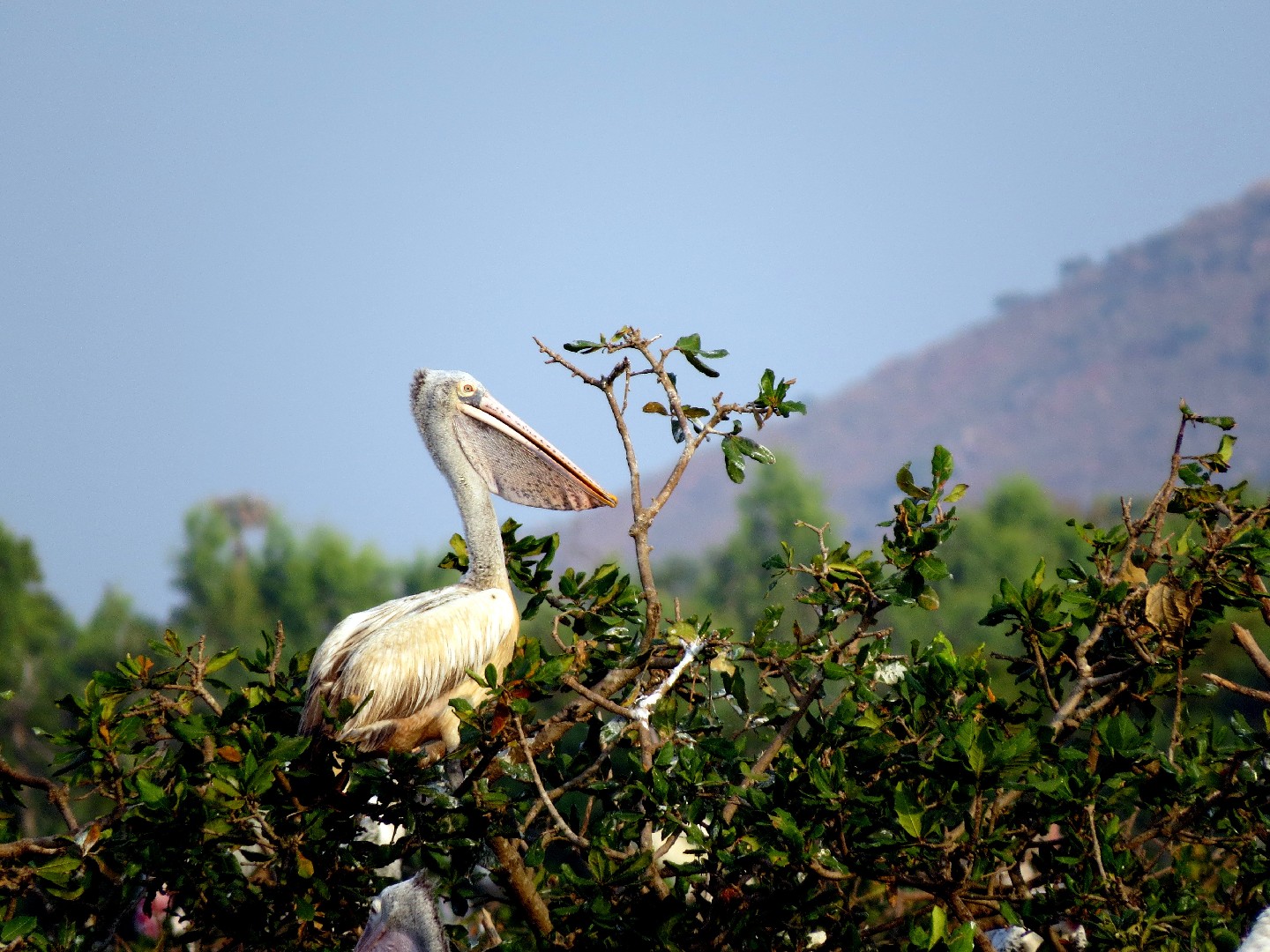Spot-billed Pelican
A species of Pelicans, Also known as Grey Pelican Scientific name : Pelecanus philippensis Genus : Pelicans
Spot-billed Pelican, A species of Pelicans
Also known as:
Grey Pelican
Botanical name: Pelecanus philippensis
Genus: Pelicans
Content
Description People often ask General Info
 Photo By Prasannavathani.D , used under CC-BY-SA-3.0 /Cropped and compressed from original
Photo By Prasannavathani.D , used under CC-BY-SA-3.0 /Cropped and compressed from original Description
The spot-billed pelican is a relatively small pelican but still a large bird. It is 125–152 cm (49–60 in) long and a weight of 4.1–6 kg (9.0–13.2 lb). It is mainly white, with a grey crest, hindneck and a brownish tail. The feathers on the hind neck are curly and form a greyish nape crest. The pouch is pink to purplish and has large pale spots, and is also spotted on the sides of the upper mandible. The tip of the bill (or nail) is yellow to orange. In breeding plumage, the skin at the base of the beak is dark and the orbital patch is pink. In flight they look not unlike the Dalmatian pelican but the tertials and inner secondaries are darker and a pale band runs along the greater coverts. The tail is rounder. The newly hatched young are covered in white down. They then moult into a greyish speckled plumage. The spots on the bill appear only after a year. The full adult breeding plumage appears in their third year. 
Size
1.5 m
Colors
Brown
Yellow
Gray
White
Pink
Life Expectancy
29-31 years
Nest Placement
Ground
Feeding Habits
Spot-billed Pelican primarily feeds on aquatic prey, including fish, amphibians, reptiles, and crustaceans. Spot-billed Pelican scoops up food while swimming or may forage in groups, coordinating dives. Noted for a throat pouch, spot-billed Pelican has adapted to draining water before swallowing.
Habitat
Spot-billed Pelican primarily inhabit shallow lowland freshwater environments, thriving in a range of watery tracts including marshes, rivers, estuaries, reservoirs, lakes, and brackish lagoons. They favor quiet backwaters for feeding and require large trees, often in swamp forests or swampy savannas, for nesting and roosting. Although they do not migrate seasonally, spot-billed Pelican disperse more broadly outside of breeding seasons. They typically form colonies, cohabitating with other waterbirds, and may also nest near human settlements when undisturbed.
Dite type
Piscivorous
People often ask
General Info
Feeding Habits
Bird food type
Behavior
Like most other pelicans, it catches fish in its huge bill pouch while swimming at the surface. Unlike the great white pelican it does not form large feeding flocks and is usually found to fish singly or in small flocks. Groups may however sometimes line up and drive fish towards the shallows. When flying to their roosts or feeding areas, small groups fly in formation with steady flapping. During the hot part of the day, they often soar on thermals. They may forage at night to some extent. The birds nest in colonies and the nest is a thick platform of twigs placed on a low tree. 
Distribution Area
The species is found to breed only in peninsular India, Sri Lanka and in Cambodia. A few birds from India are known to winter in the Gangetic plains but reports of its presence in many other parts of the region such as the Maldives, Pakistan and Bangladesh has been questioned. 
Species Status
Not globally threatened.
Scientific Classification
Phylum
Chordates Class
Birds Order
Pelicans and Relatives Family
Pelicans Genus
Pelicans Species
Spot-billed Pelican